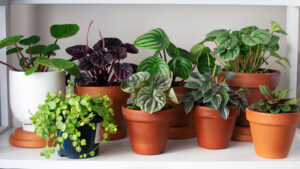
‘All we need is the air that we breathe…’
When we think about air pollution, we often picture smog-filled city streets or industrial emissions. However, the quality of the air inside our homes and buildings can also have a significant impact on our health and well-being.
Indoor Air Quality (IAQ) refers to the cleanliness and purity of the air within enclosed spaces such as: homes, offices, schools and public buildings. It encompasses factors such as the presence of pollutants, levels of humidity, and ventilation rates. Poor indoor air quality can lead to a range of health issues, including respiratory problems, allergies and asthma, as well as discomfort and reduced productivity.
Identifying common indoor air pollutants:
- Volatile Organic Compounds (VOCs): VOCs are chemicals emitted as gases from household products such as paints, cleaning agents and furnishings. Prolonged exposure to high levels of VOCs can cause eye, nose and throat irritation, as well as headaches and nausea.
- Particulate Matter (PM): PM refers to tiny particles suspended in the air, often generated by activities such as cooking, smoking or burning fossil fuels. Fine particles can penetrate deep into the lungs and exacerbate respiratory conditions, while larger particles can irritate the eyes and throat.
- Carbon Monoxide (CO): CO is a colourless, odourless gas produced by incomplete combustion of fuels such as gas, oil and wood. It can cause symptoms such as dizziness, nausea and headaches, and, in high concentrations, it can be fatal.
- Mould and Mildew: damp and poorly ventilated indoor spaces can promote the growth of mould and mildew, which release spores and allergens into the air. Exposure to mould can trigger allergies, asthma attacks and respiratory infections.
Achieving better indoor air quality:
- Ventilation: proper ventilation is essential for maintaining good indoor air quality. Ensure that your home is adequately ventilated by opening windows and using extractor fans, especially in areas prone to moisture such as kitchens and bathrooms.
- Air purifiers: consider investing in air purifiers equipped with HEPA filters to remove airborne pollutants such as dust, pollen and pet dander. Place them in rooms where you spend the most time, such as bedrooms and living areas.
- Houseplants: houseplants are natural air purifiers that can help remove toxins and improve indoor air quality. Consider adding plants such as spider plants, peace lilies and snake plants to your home, to help purify the air.
- Reduce VOC emissions: choose low-VOC or VOC-free products when decorating or furnishing your home. Look for paints, adhesives, and furnishings labelled as eco-friendly or environmentally friendly to minimise VOC emissions.
- Regular cleaning: keep your home clean and free from dust, pet hair and other allergens that can contribute to poor indoor air quality. Vacuum regularly, use damp cloths for dusting, and wash bedding and soft furnishings frequently.
- Control humidity: maintain indoor humidity levels between 30% and 50% to prevent the growth of mould and mildew. Use a dehumidifier in damp areas and consider installing extractor fans in kitchens and bathrooms to remove excess moisture. You can also aid your sleep if the indoor humidity is within the above specified levels.
Improving indoor air quality is essential for creating healthy, comfortable and sustainable living environments.
By addressing common indoor air pollutants, implementing effective ventilation/filtration systems, and promoting green building practices, we can all take proactive steps to enhance the quality of the air in homes and workplaces.
Let's work together to ensure that everyone has access to clean and healthy indoor air, promoting health, well-being and environmental sustainability!
Carl Dodd, Property Revolutions Ltd.

